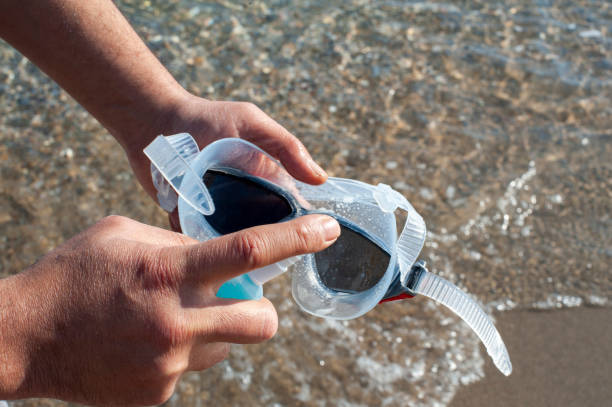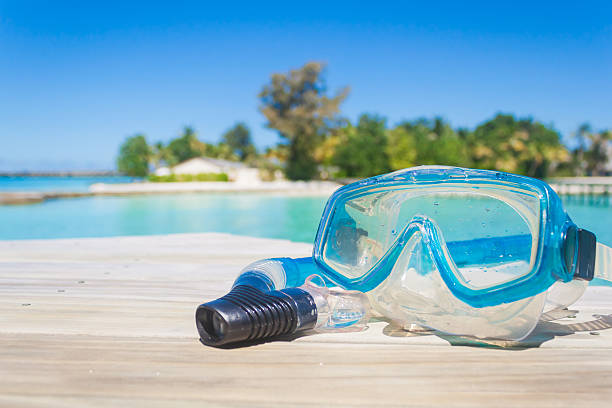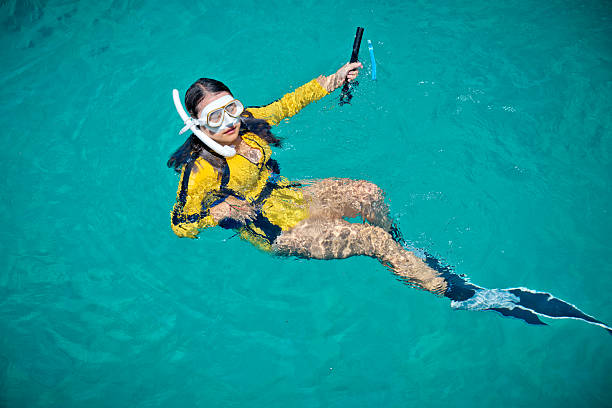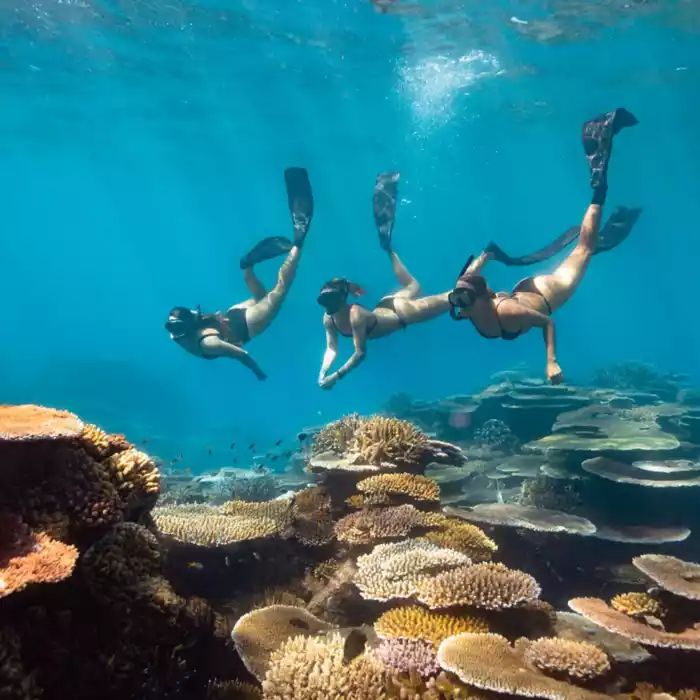
источник: pinterest
Фридайвинг — это захватывающий и волнующий вид спорта, который позволяет людям исследовать завораживающие глубины подводного мира. Он сочетает в себе искусство задержки дыхания с чувством осознанности, позволяя вам соединиться с океаном таким образом, который является одновременно бодрящим и освобождающим. В этой статье мы углубимся в тонкости фридайвинга, обсудим его основы, преимущества и многое другое. Итак, давайте продолжим и рассмотрим все, что вам нужно знать о фридайвинге.
Что такое фридайвинг?
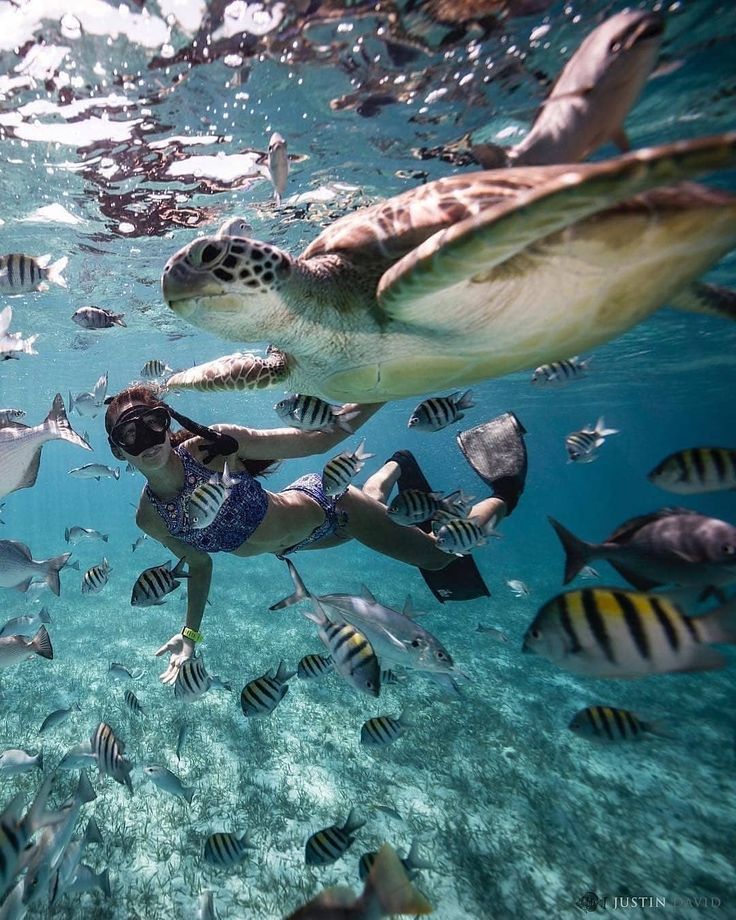
источник: pinterest
Фридайвинг — это необычное занятие, которое позволяет вам исследовать подводный мир без громоздкого акваланга. Оно включает в себя искусство задержки дыхания, когда вы погружаетесь в глубины, полагаясь исключительно на свои физические и умственные возможности. В отличие от подводного плавания, в котором для подачи воздуха под воду используются дыхательные аппараты, фридайвинг подразумевает задержку дыхания и подчеркивает связь между дайвером и окружающей средой. Эта форма подводного исследования позволяет людям испытать уникальное чувство спокойствия и единения с океаном.
Преимущества фридайвинга
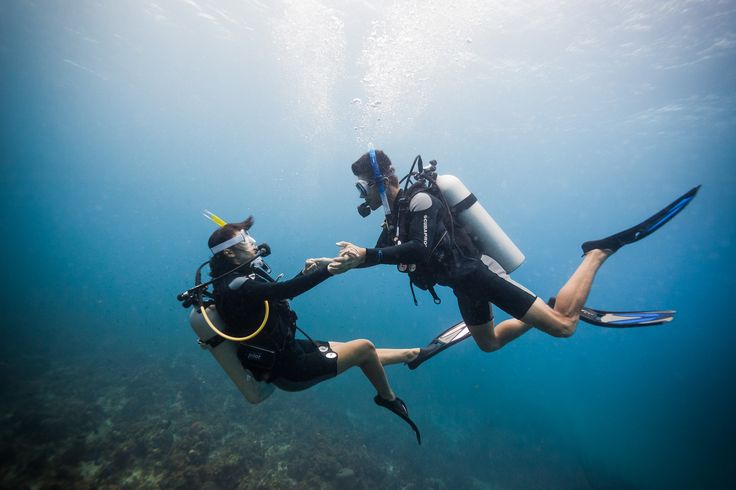
источник: pinterest
Увеличение емкости легких и контроля дыхания
Занятия фридайвингом дают множество преимуществ, как физических, так и умственных. Одним из самых заметных улучшений является увеличение емкости легких и контроля дыхания. Благодаря регулярным занятиям фридайверы развивают способность вдыхать большие объемы воздуха и задерживать дыхание на более продолжительные периоды времени. Это не только увеличивает общую емкость легких, но и повышает эффективность и контроль дыхания.
Улучшение сердечно-сосудистой системы и выносливости
Более того, фридайвинг — это отличная тренировка сердечно-сосудистой системы, которая повышает уровень физической подготовки и выносливости. Усилия, необходимые для ныряния и плавания под водой, укрепляют сердце и улучшают кровообращение. Это, в свою очередь, помогает повысить выносливость и общее состояние сердечно-сосудистой системы.
Развитие умственной силы и расслабления
Еще одно важное преимущество фридайвинга заключается в его способности развивать умственную силу и расслабление. Этот вид спорта требует глубокого уровня концентрации и сосредоточенности, заставляя дайверов отпустить любые отвлекающие факторы и полностью присутствовать в настоящем моменте. Эта осознанность в сочетании с ритмичными дыхательными техниками, используемыми во фридайвинге, способствует состоянию спокойствия, снижает стресс и помогает достичь ясности ума.
Фридайвинг против подводного плавания
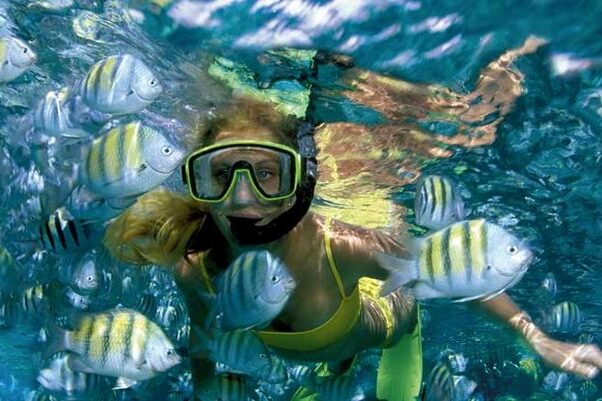
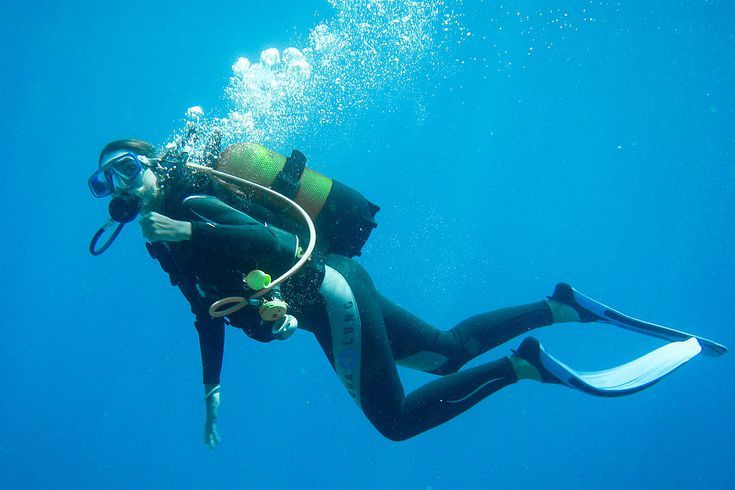
источник: pinterest
Хотя и фридайвинг, и подводное плавание с аквалангом позволяют людям исследовать подводный мир, они существенно различаются по оборудованию, технике и общему опыту.
| Фридайвинг | Подводное плавание с аквалангом | |
| Техника | Опирается на технику задержки дыхания и плавания. | Требуется специализированное оборудование, включая акваланг и регулятор. |
| Нижнее время | Ограниченное время нахождения на дне из-за задержки дыхания. | Увеличенное время нахождения на дне, так как подача воздуха осуществляется из акваланга. |
| Опыт | Подчеркивает осознанность и связь с океаном. | Предлагает более захватывающий опыт исследования окрестностей. |
| Оборудование | Требуется меньше оборудования и снаряжения. | Требуется обширное обучение использованию и обслуживанию оборудования. |
| Глубина проникновения | Подходит для небольших и средних глубин. | Позволяет совершать более глубокие погружения при наличии соответствующей сертификации и обучения. |
Воздух, подаваемый с поверхности, против подводной независимости
Одно из ключевых различий между фридайвингом и подводным плаванием заключается в способе подачи воздуха. При подводном плавании дайверы полагаются на воздух, подаваемый с поверхности, который обеспечивается дыхательным аппаратом. Это оборудование позволяет находиться под водой длительное время, обеспечивая дайверу непрерывную подачу воздуха. Фридайвинг, напротив, делает акцент на искусстве задержки дыхания, что позволяет дайверам исследовать глубины без какого-либо внешнего источника воздуха. Это дает уникальное чувство самодостаточности и свободы, поскольку фридайверы полагаются исключительно на свои собственные физические возможности.
Ощущение невесомости во фридайвинге
Еще один аспект, который отличает фридайвинг от подводного плавания, — это ощущение невесомости. Во время фридайвинга дайверы не обременены тяжелым снаряжением для подводного плавания, что позволяет им легко и непринужденно скользить по воде. Эта невесомость создает чувство абсолютной свободы, позволяя дайверам ощутить подводный мир в его чистейшей форме.
Волнение и вызов от задержки дыхания
Одним из самых волнующих аспектов фридайвинга является сложность задержки дыхания. В отличие от аквалангистов, которые имеют постоянный запас воздуха, фридайверы должны полагаться на объем легких и контроль, чтобы оставаться под водой. Способность задерживать дыхание на длительное время становится личным достижением, раздвигая границы физических и умственных возможностей. Это волнение и связанное с ним чувство выполненного долга делают фридайвинг поистине уникальным и полезным опытом.
Что нужно для фридайвинга?
Для занятий фридайвингом необходимы и необязательны некоторые снаряжение для фридайвинга требуется, обеспечивая как безопасность, так и оптимальные результаты. Основное оборудование, необходимое для фридайвинга, включает маску, трубку и ласты.
Маска для фридайвинга
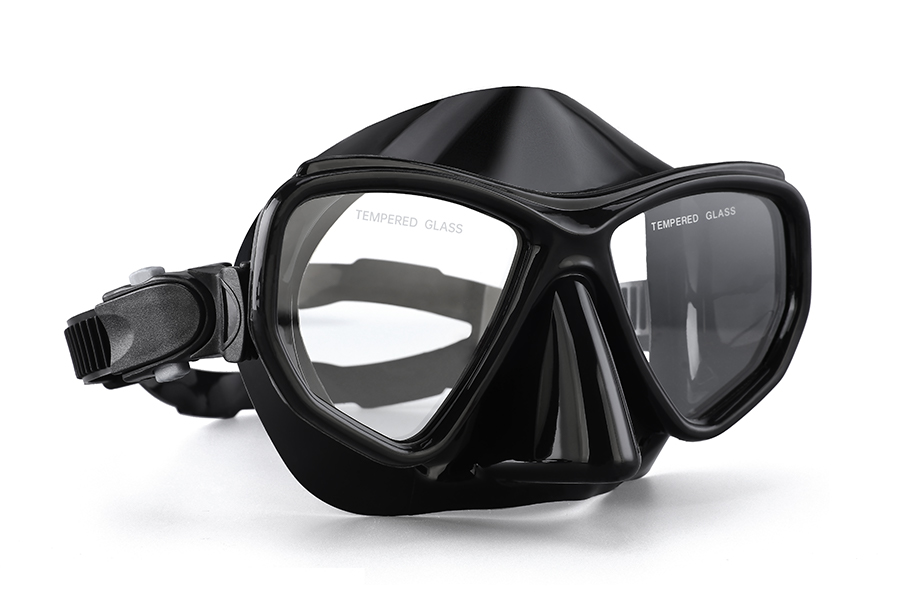
The маска для фридайвинга служит для обеспечения четкого поля зрения под водой, позволяя дайверам наблюдать за увлекательной морской жизнью и подводными ландшафтами. Хорошая маска для фридайвинга должна плотно прилегать, предотвращая попадание воды и обеспечивая отличное периферическое зрение.
Фридайвинг с трубкой
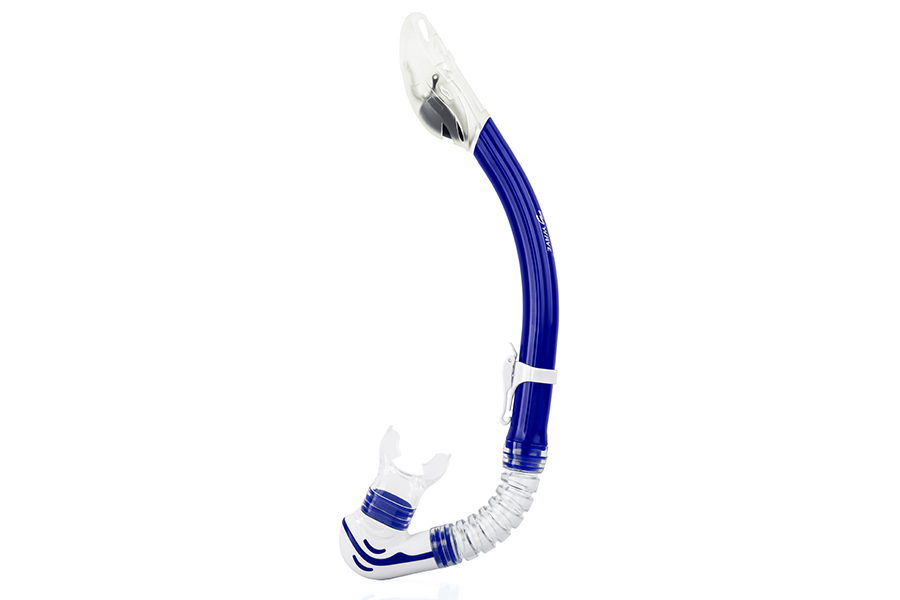
The фридайвинг с трубкой является важным инструментом, который позволяет дайверам дышать, плавая лицом вниз на поверхности воды. Он обеспечивает эффективное дыхание и экономит энергию, так как дайверам не нужно постоянно всплывать, чтобы набрать воздуха. Трубка должна быть высокого качества, с удобным загубником и эффективным продувочным клапаном для удаления воды, которая может попасть внутрь.
Ласты для фридайвинга
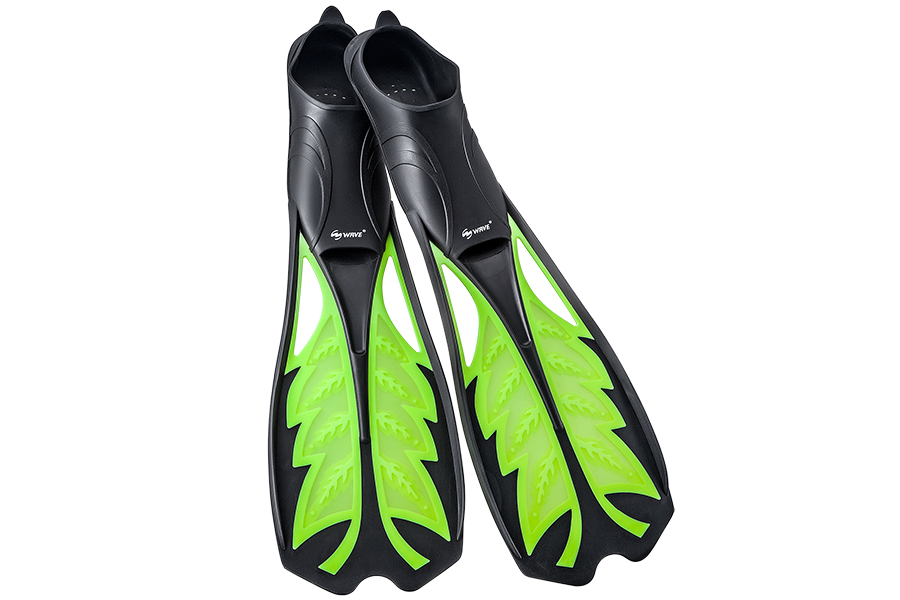
Ласты для фридайвинга жизненно важны для движения в воде, позволяя дайверам двигаться более эффективно и экономить энергию. Они бывают разных конструкций, и выбор зависит от личных предпочтений и стиля дайвинга. Ласты должны плотно прилегать и быть удобными для ношения в течение длительного времени.
Дополнительное снаряжение для фридайвинга: гидрокостюмы, грузы и подводные компьютеры
Помимо основного оборудования, есть дополнительное снаряжение и средства безопасности, которые могут сделать занятия фридайвингом более интересными.
- Гидрокостюмы обеспечивают теплозащиту и изоляцию, позволяя дайверам чувствовать себя комфортно в холодной воде.
- Веса используются для достижения нейтральной плавучести, помогая дайверам без труда погружаться и оставаться на нужной глубине.
- Компьютеры для дайвинга являются ценными инструментами, которые предоставляют данные в реальном времени, такие как глубина, время погружения и скорость всплытия, обеспечивая безопасность и управление профилями погружения.
Спасательное оборудование: буй и водолазный нож
В целях безопасности при фридайвинге крайне важно иметь буй, прикрепленный к тросу. Это буй действует как визуальный маркер и может использоваться для отдыха или подачи сигнала бедствия. Он также обеспечивает видимость для других судов, гарантируя безопасность дайвера. Кроме того, нож для дайвинга имеет важное значение, помогая прорезать запутанные сети или выброшенные рыболовные лески.
Как безопасно заниматься фридайвингом
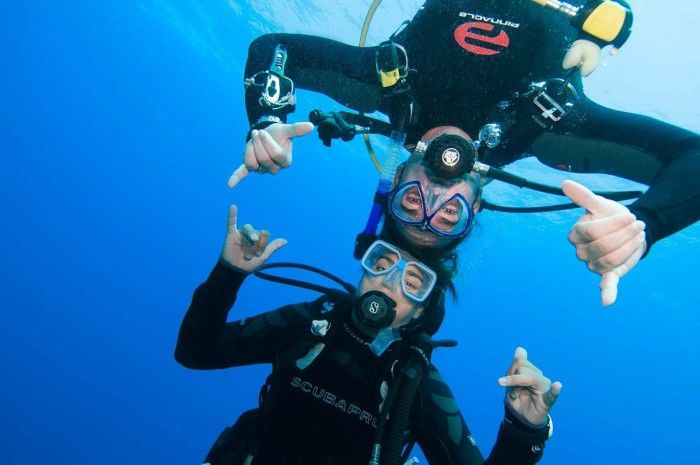
источник: pinterest
Чтобы безопасно заниматься фридайвингом, следует учитывать несколько важных факторов.
Понимание своих ограничений и возможностей
Первое и самое главное — это понимание своих пределов и возможностей. У каждого человека разные физиологические и психологические возможности, и крайне важно уважать эти пределы и не выходить за рамки комфорта. Знайте, когда следует прекратить погружение, если вы чувствуете себя плохо или устали.
Правильные техники дыхания и упражнения на расслабление
Правильные дыхательные техники и упражнения на расслабление являются основополагающими в фридайвинге. Диафрагмальное дыхание, или дыхание животом, обеспечивает более эффективный газообмен и способствует расслаблению. Медленное и контролируемое дыхание перед погружением может помочь успокоить разум и подготовить тело к подводному опыту.
Система Buddy и подводное общение
Система напарников является важной мерой безопасности во фридайвинге. Всегда ныряйте с партнером, который обучен фридайвингу и может оказать поддержку и помощь в случае чрезвычайной ситуации. Установите эффективную связь с помощью предварительного планирования погружения и использования сигналов руками. Регулярно проверяйте благополучие друг друга во время погружения, чтобы обеспечить безопасность и предотвратить несчастные случаи.
Действия в чрезвычайных ситуациях и первая помощь во фридайвинге
Крайне важно быть готовым к чрезвычайным ситуациям при занятии фридайвингом. Знание методов оказания первой помощи, характерных для фридайвинга, таких как искусственное дыхание и восстановительные положения, может спасти жизнь в критических ситуациях. Понимание и отработка экстренных процедур, таких как медленное всплытие и равномерное выравнивание давления в ушах, имеет жизненно важное значение для предотвращения баротравмы и других потенциально опасных состояний.
Как заниматься фридайвингом для новичков
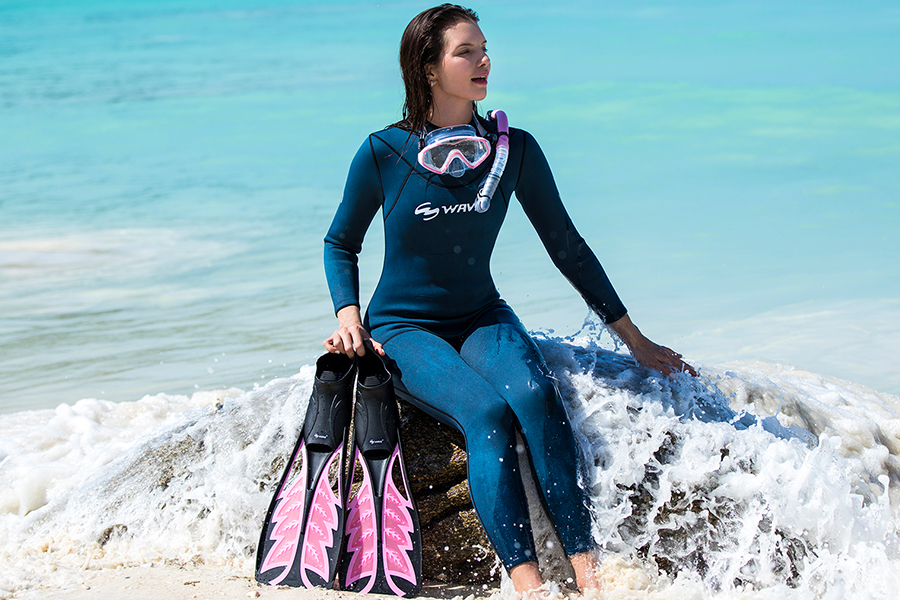
Есть несколько важных факторов, которые следует учитывать при выборе способа начать заниматься фридайвингом для новичков.
Ищу авторитетного инструктора или курс по фридайвингу
Для новичков в фридайвинге поиск авторитетного инструктора или курса по фридайвингу имеет первостепенное значение. Правильное обучение и руководство квалифицированного инструктора обеспечат вам развитие необходимых навыков и знаний для безопасного занятия этим видом спорта. Ищите инструкторов, сертифицированных признанными организациями, такими как AIDA, PADI или SSI. Хороший инструктор познакомит вас с основами фридайвинга, включая протоколы безопасности, методы выравнивания давления и дыхательные упражнения. Они также предоставят персонализированную обратную связь и поддержку, помогая вам прогрессировать в комфортном темпе и обретать уверенность в своих силах.
Освоение базовых навыков: правильный удар ногой и выравнивание
Чтобы стать опытным фридайвером, крайне важно овладеть базовыми навыками. Правильные техники ударов ногами, такие как флаттер или дельфин, позволят вам эффективно двигаться в воде, экономя энергию и максимально увеличивая время задержки дыхания. Флаттер включает в себя чередующиеся движения ног, в то время как дельфин использует плавные волнообразные движения. Выравнивание, процесс выравнивания давления в среднем ухе, имеет важное значение для предотвращения баротравмы и дискомфорта. Такие техники, как прием Вальсальвы или прием Френзеля, могут помочь. Постепенное увеличение глубины и времени, проведенного под водой, позволит вам обрести уверенность и укрепить свои способности к фридайвингу.
Преодоление ментальных блоков
Преодоление ментальных блоков является важнейшим аспектом фридайвинга. Страх задержки дыхания или погружения под воду может значительно ограничить ваш прогресс. Практикуя методы релаксации, такие как прогрессивная мышечная релаксация и глубокое дыхание, вы можете успокоить свой разум и тело. Упражнения по визуализации, когда вы представляете успешные и безмятежные погружения, помогают создать позитивный ментальный образ. Кроме того, позитивный внутренний диалог укрепляет уверенность и рассеивает негативные мысли. Последовательно применяя эти стратегии, вы можете преодолеть ментальные барьеры, обрести уверенность в своих силах и полностью принять преобразующий опыт фридайвинга.
Техники и тренировки задержки дыхания
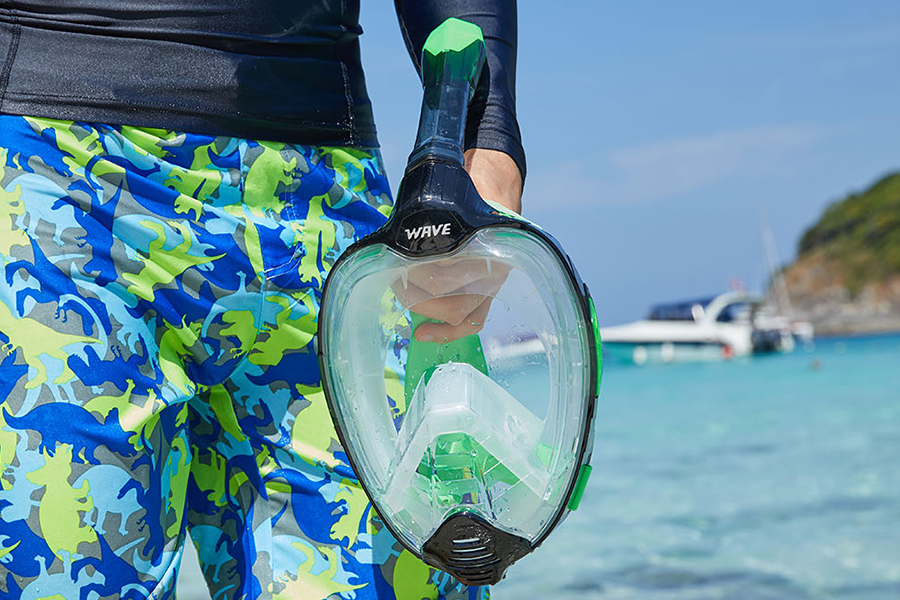
Развитие жизненной емкости легких и диафрагмального дыхания
Развитие емкости легких и освоение диафрагмального дыхания имеют важное значение во фридайвинге. Регулярные тренировки могут увеличить количество воздуха, которое вы можете вдыхать и хранить, тем самым увеличивая время задержки дыхания. Начните с упражнений на диафрагмальное дыхание, которые включают глубокое дыхание в нижнюю часть легких, расширяя диафрагму, а не грудь. Включите такие упражнения, как вакуумное дыхание, которое включает в себя полный выдох и подтягивание диафрагмы вверх, и упаковку легких, когда вы делаете несколько небольших вдохов, чтобы расширить легкие за пределы их обычной емкости. Эти методы могут значительно увеличить емкость легких и оптимизировать дыхательную функцию, улучшая ваши общие результаты во фридайвинге.
Упражнения при статическом апноэ
Упражнения на статическое апноэ направлены на увеличение времени задержки дыхания. Эти упражнения включают задержку дыхания в неподвижном состоянии, постепенно увеличивая продолжительность с течением времени. Начните с поиска удобной и безопасной среды, например, бассейна с обученным напарником или инструктором. Начните с диафрагмального дыхания, чтобы максимизировать потребление кислорода, затем задержите дыхание, оставаясь максимально расслабленным. Применение методов релаксации, таких как визуализация и контролируемая мышечная релаксация, может снизить беспокойство и улучшить общую эффективность задержки дыхания, позволяя проводить более длительные и эффективные сеансы статического апноэ.
Динамические упражнения на апноэ
Динамические упражнения на апноэ подчеркивают выносливость и эффективность фридайвинга. Эти упражнения включают горизонтальное или вертикальное плавание с задержкой дыхания, что повышает вашу способность плавать на большие расстояния и экономить энергию.
Использование правильных техник в сочетании с регулярными тренировками и практикой улучшит ваши способности задерживать дыхание и позволит вам исследовать подводный мир в течение длительного времени.
Распространенные ошибки фридайвинга и как их избежать
Есть несколько распространенных ошибок, которые люди часто совершают, занимаясь фридайвингом. Знание этих ошибок и умение избегать их имеет важное значение для безопасного и приятного погружения.
Пропуск разминки и упражнений на растяжку может привести к растяжениям мышц, судорогам и общему снижению производительности в воде. Правильная разминка и растяжка помогают подготовить тело к нагрузкам во время фридайвинга и снизить риск получения травм.
Игнорирование признаков респираторных проблем, такие как кашель или хрипы, могут быть опасны. Эти симптомы могут указывать на воспаление легких или дыхательных путей, которое может привести к потенциальным осложнениям в воде. Если у вас возникли какие-либо проблемы с дыханием, необходимо обратиться за медицинской помощью и воздержаться от фридайвинга до тех пор, пока врач не разрешит вам.
Слишком быстрое снижение во время погружения может привести к баротравме — состоянию, вызванному неравным давлением между средним ухом и окружающей средой. Несоблюдение правильных методов выравнивания давления может привести к травмам ушей и повлиять на общее впечатление от погружения. Не торопитесь и часто выравнивайте давление во время спуска, обеспечивая безопасное и комфортное погружение.
Отсутствие надлежащих мер безопасности и общения с напарником может быть чрезвычайно опасным во время фридайвинга. Отсутствие партнера по погружению, пренебрежение планированием перед погружением или неспособность установить четкие сигналы руками могут привести к несчастным случаям или потере связи под водой. Всегда уделяйте первостепенное внимание безопасности дайвера и придерживайтесь установленных протоколов безопасности.
Лучшие места для фридайвинга по всему миру
Для тех, кто ищет впечатляющие места для фридайвинга, мир предлагает изобилие захватывающих дух подводных мест. Эти направления предоставляют возможность погрузиться в красоту и разнообразие морской жизни.
Большая голубая дыра в Белизе
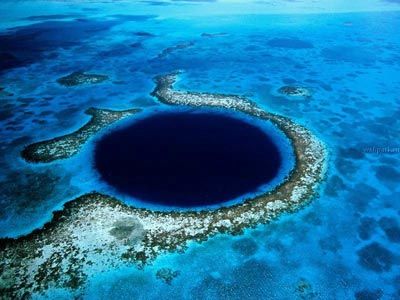
источник: pinterest
Большая Голубая Дыра в Белизе — известное и знаковое место для фридайвинга. Эта огромная подводная воронка может похвастаться кристально чистой голубой водой, привлекая дайверов, жаждущих исследовать ее мистические глубины. Большая Голубая Дыра изобилует яркими коралловыми образованиями и разнообразными морскими видами, предлагая потустороннюю атмосферу. Погружаясь в ее глубокие синие просторы, вы столкнетесь с завораживающими сталактитами и сталагмитами, что делает это незабываемым опытом фридайвинга, сочетающим природную красоту с чувством приключения.
Кристально чистые воды Мальдив
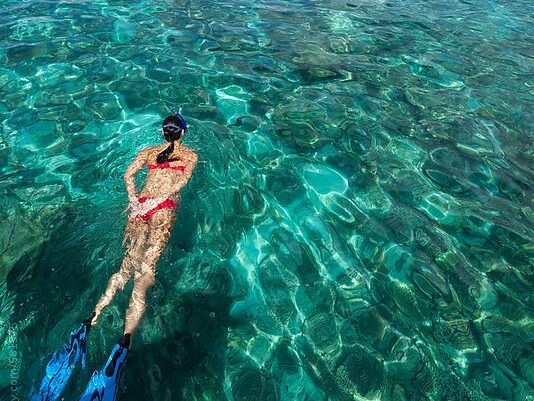
источник: pinterest
Мальдивы славятся своими кристально чистыми бирюзовыми водами и обильной морской жизнью, что делает их идеальным местом для фридайверов. Погрузитесь в невероятную красоту его ярких коралловых рифов, где вы можете встретить неуловимых мант, грациозно скользящих, и поплавать рядом с китовыми акулами. Подводная видимость не имеет себе равных, что позволяет получить захватывающий опыт в настоящем морском раю. Мальдивы предлагают незабываемое путешествие в глубины для любителей подводного мира, обещающее приключения и захватывающие встречи.
Полуостров Юкатан в Мексике
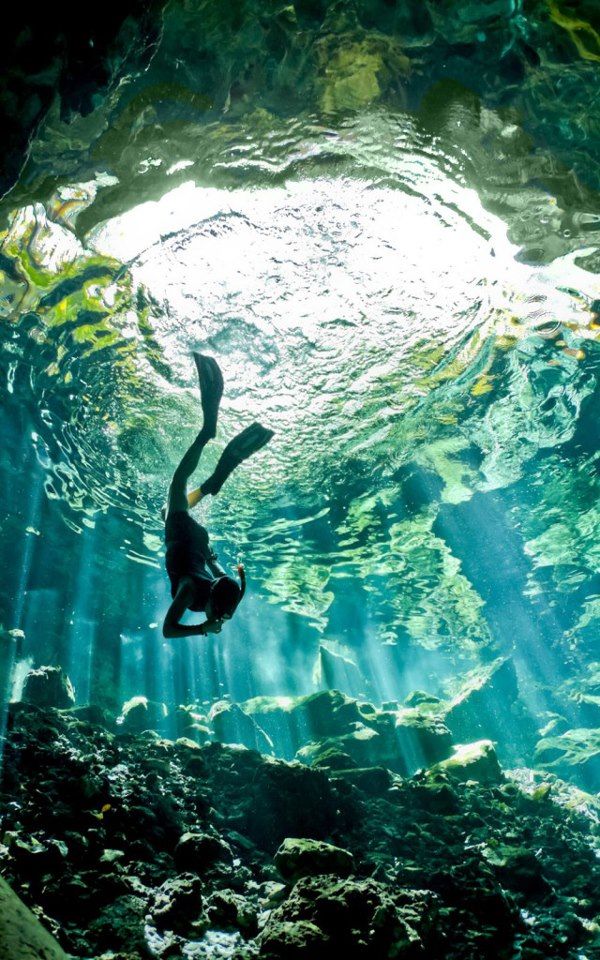
источник: pinterest
Полуостров Юкатан в Мексике является домом для некоторых из самых необычных подводных пещерных систем в мире, известных как сеноты. Эти естественные карстовые воронки, образованные обрушившейся известняковой коренной породой, создают таинственную и захватывающую среду для исследования фридайверами. С впечатляющими скальными образованиями, кристально чистой голубой водой и лучами солнечного света, пронизывающими глубины, сеноты предлагают уникальный и незабываемый опыт фридайвинга. Независимо от того, плывете ли вы по узким проходам или восхищаетесь подводными сталактитами и сталагмитами, сеноты предлагают потустороннее приключение.
Коралловые рифы Индонезии
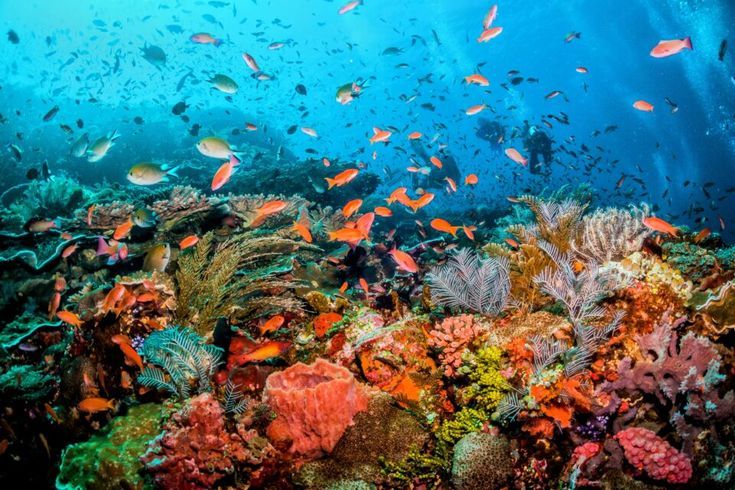
источник: pinterest
Богатые коралловые рифы Индонезии — это обязательное место для посещения для любителей фридайвинга. Такие знаковые места, как Раджа Ампат и Бали, демонстрируют некоторые из самых разнообразных и ярких морских экосистем в мире. Погрузитесь в красочный ковер коралловых садов, познакомьтесь с величественными мантами и станьте свидетелем невероятного биоразнообразия, процветающего под поверхностью. Теплые воды Индонезии и потрясающие подводные ландшафты делают ее лучшим местом как для новичков, так и для опытных фридайверов.
Заключение
Фридайвинг обеспечивает преобразующий и впечатляющий опыт, позволяя людям глубоко соединиться с океаном. Независимо от того, новичок вы или опытный фридайвер, исследование лучших мест для фридайвинга в мире, несомненно, очарует вас чудесами подводного мира. Так что сделайте глубокий вдох, окунитесь в глубины и позвольте завораживающему миру под поверхностью раскрыться перед вашими глазами.
Часто задаваемые вопросы
В1: Какие существуют дисциплины фридайвинга?
Фридайвинг включает в себя несколько дисциплин, каждая из которых фокусируется на различных аспектах дайвинга на задержке дыхания. Некоторые распространенные дисциплины:
- Постоянный вес (CWT): Погружение с ластами и/или моноластой, при котором дайвер погружается и всплывает с одинаковым весом.
- Свободное погружение (FIM): Подтягивание за веревку для спуска и подъема без использования ласт.
- Статическое апноэ (СТА): Задержать дыхание как можно дольше, плавая на поверхности.
- Динамическое апноэ (ДИН): Плавание под водой горизонтально с ластами или моноластой, позволяющее преодолеть максимальное расстояние за один вдох.
В2: Как начать изучать фридайвинг?
Чтобы начать изучать фридайвинг, необходимо пройти курс у сертифицированного инструктора или в признанной школе фридайвинга. Новички изучат протоколы безопасности, технику дыхания, методы выравнивания давления и основные навыки подводного плавания. Рекомендуется попрактиковаться в контролируемой среде, например, в бассейне, прежде чем переходить к открытой воде. Кроме того, поддержание хорошей физической формы, практика релаксации и улучшение емкости легких могут помочь улучшить ваши впечатления от фридайвинга.
В3: Безопасен ли фридайвинг?
Фридайвинг может быть безопасным, если им заниматься правильно и с соответствующей подготовкой. Меры безопасности включают в себя никогда не нырять в одиночку, понимание своих пределов и наличие обученного напарника или наблюдателя. Крайне важно изучить и соблюдать протоколы безопасности, такие как распознавание признаков гипоксии (низкого уровня кислорода) и выполнение спасательных процедур. Избегать гипервентиляции перед погружениями и медленно всплыть также важно для предотвращения потери сознания на мелководье и других рисков.
В4: Какое снаряжение мне необходимо для фридайвинга?
Базовое снаряжение для фридайвинга включает в себя маску малого объема, длинные ласты и гидрокостюм для защиты от холода и обеспечения плавучести. Трубка часто используется для дыхания на поверхности до и после погружений. Грузовой пояс помогает достичь нейтральной плавучести на глубине, а часы для дайвинга или компьютер могут отслеживать время и глубину погружения. Кроме того, для обозначения места погружения и обеспечения поддержки на поверхности используется спасательное снаряжение, такое как поплавок или буй.
В5: Как мне улучшить время задержки дыхания?
Улучшение времени задержки дыхания включает в себя практику определенных дыхательных техник, таких как диафрагмальное и релаксационное дыхание. Регулярные тренировки статического апноэ (задержка дыхания в неподвижном положении) и динамического апноэ (задержка дыхания при горизонтальном плавании) могут помочь. Сердечно-сосудистая подготовка, гибкость и правильная диета также играют роль в улучшении способности задержки дыхания. Важно увеличивать продолжительность задержки дыхания постепенно и в безопасных условиях.
В6: Какую пользу для здоровья приносит фридайвинг?
Фридайвинг предлагает многочисленные преимущества для здоровья, включая улучшение емкости легких и эффективности дыхания. Он улучшает сердечно-сосудистую систему, снижает стресс с помощью методов релаксации и повышает умственную концентрацию и дисциплину. Этот вид спорта также способствует лучшему осознанию тела и гибкости. Кроме того, пребывание в воде и связь с природой могут дать чувство покоя и благополучия. Однако важно практиковать безопасно, чтобы избежать любых потенциальных рисков.
